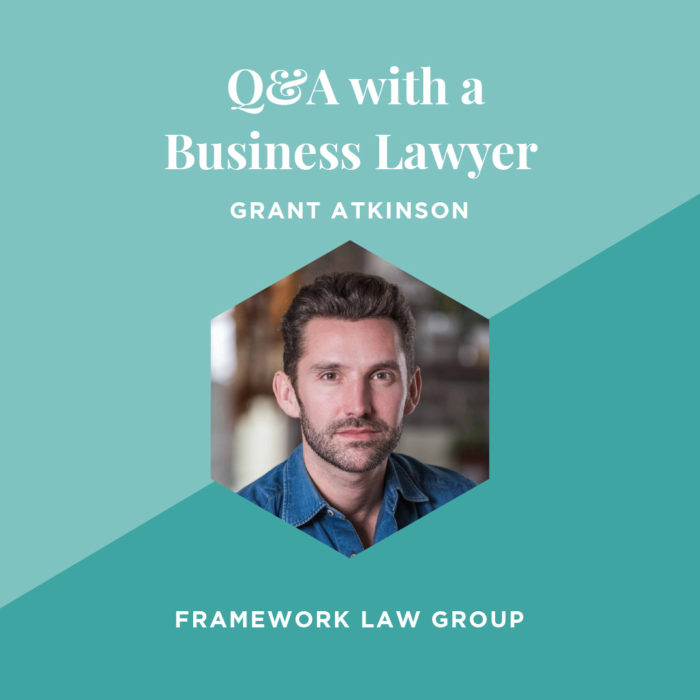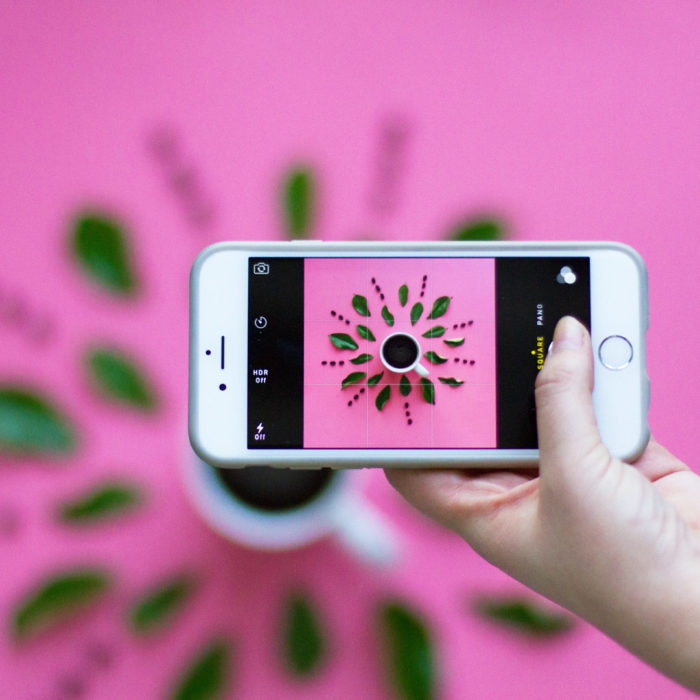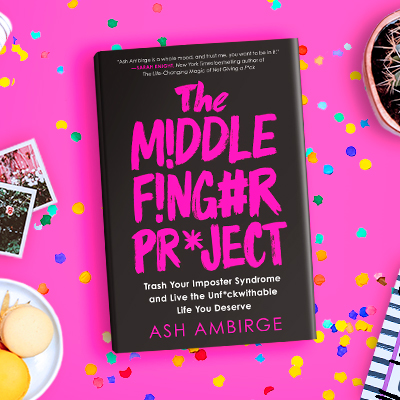Small Business Tips
Q&A with Ash Ambirge, Author of The Middle Finger Project
Have we ever mentioned how much we love Ash Ambirge & The Middle Finger Project?

Well, we’re about to do it again.
Not only has she been a phenomenal longtime client and friend, she’s been one of our go-to resources for all things business via her blog and courses.
In the very early stages of Fuze Branding, we stumbled upon Ash’s work while trying to navigate all of the many, many facets of setting up a sustainable business. Moving from the freelance world and into the full-fledged creative agency world was intimidating, and Ash’s straight shooting (and often hilarious) advice on everything from setting up a contract for each client (always) to selling your services without sounding like a late-night As Seen on TV advertisement really hit the spot.
So needless to say, we’re very PRO-Middle Finger Project at Fuze Branding.
We recently had a virtual cuppa tea with Ash to discuss her journey as a no-holds-barred entrepreneur badass and the release of her book, also named The Middle Finger Project.

Q. So, first we should establish that we’ve all been big fans of your work through The Middle Finger Project for years. But we know you spent some hard years learning business from the trenches before launching TMF. Give us a little background?
A. Ah, trenches. Yes. As in trench coat. As in: just one of the items I used to dream about being able to afford, along with a quality bra. And lemon pepper chicken! Lemon pepper chicken was such a middle class thing. I come from a trailer park in rural Pennsylvania with a mom who had severe clinical social anxiety and struggled her entire life because of it. I never really saw “work” modeled for me—I remember I used to yell at her in this dramatic teenage fashion and ask her why she couldn’t get a real job like other people’s parents—so I became fascinated with answering two questions as I became an adult: What does it look like to live a good life, and what does it mean to do work you’re proud of? She died right as I turned twenty-one, so I sold our trailer and all of the things inside and took off for the city of Philadelphia on this grand mission to answer those questions for myself.
Once there, I became a model citizen, desperate to be “normal.” I studied all of the women with their highlights and their $15 glasses of chardonnay. I watched the way men interacted with one another in the streets. This was a much different reality, the upper middle class, white collar professional of Philadelphia. I did everything I could to fit in, because I knew that if I messed up, I’d be a goner. So effectively what I started was “The Middle Class Project,” and man, was I succeeding. Before long, I was making $32,000 a year as a marketing assistant…and then $40,000 a year….and then $48,000 at my job in advertising sales, and boy, did I think I was hot sh*t! I could go to Target and afford to put whatever I wanted in my cart, and I had pre-washed potatoes and those little disposable flossers in the shape of animals. I was really livin’ the life. Until I realized that I had gone to work every day and felt proud to have gone. But, what had I done? And that’s when I discovered that “normal” was the most disappointing thing that ever happened to me.
Cue: Me upending the perfect little life that I built in an attempt to continue seeking the answer to those questions: What did it mean to live a good life, and what was it to do work you were proud of? What does it mean to dedicate your life to a task? How do you know if you have chosen well? And, what if you haven’t?
That led me to throw it all away in favor of this freewheeling freelance writing career—which went hysterically bad at first. Very, very bad. So badly, that eventually I found myself sleeping in my car in a Kmart parking lot with $26 to my name and no where to go and no more credit and no CLUE what to do. But sometimes, our moments of desperation are also the ones that provide the greatest source of inspiration. That night I made my first $2,000 by selling an idea. I’ve been selling ideas ever since.
Q. We found your work in that timeframe where we were first trying to launch Fuze, knee deep in research and feeling like nobody was giving the REAL, nitty gritty business advice we needed as entrepreneurs. It was a relief to find you really peeling back the cover on doing business. What made you decide to just put it all out there, warts and all?
A. I was the daughter of a woman who didn’t have a voice. I grew up being her voice and mine. I had to develop that muscle in a way that most people don’t. I had to call the insurance companies and make her dentist appointments and go over and ask the neighbor for our lawn mower back. But on that same token, it was through the act of doing those things that I learned how to use my voice—and how to use it in such a way that people didn’t see the trailer park I lived in: they saw me. Creativity was how I got anything done. If you ask me to solve a problem to this day, I’m going to find a creative solution, rather than a researched solution. And yet…when I entered corporate America for the first time, it was painfully obvious how lacking it was in imagination and wit and originality. Anyone can sit there and ring a bell for 40 years. “Like, hey Bob! I sat here and rang this bell for 40 years and finally got a sticker! Dun, dun, dun!” But that’s what corporate America demands: uniformity. Conformity. Passivity. Traditional success felt like being silenced. And so created an outlet where I could be my weird, wacky, true, creative self. My success was a byproduct of that—but it wasn’t done intentionally. I was just a girl who wanted to write.
Q. Some of the best lessons we have ever learned from you have to do with understanding the value of our work and standing firm in that. Something we repeated to each other a lot in the early days is “This is not what it COSTS. This is what it’s WORTH.” Which probably came straight out of your mouth. How did you reach that understanding in your own work?
A. This is something I’ve learned on so many levels, over and over and over again. I learned it as a child, when I desperately wanted a pair of VANS sneakers. My mother told me there was no way we could afford them, and I remember thinking that I would earn the $50 to buy them, because those shoes were worth far more than $50 to me. They were acceptance, and belonging, and peace of mind—and those things were worth any price. I always paid very close attention to an item’s real value versus its perceived value and I was well aware that the latter was the most important.
But more than that, as I developed my business mind working in advertising, part of my job was to show prospective clients that their competitors (with their identity hidden, of course) spent X amount of dollars with us and yet earned 100 times that in ROI. So the concept of ROI was always something I understood very well—but unfortunately not something most consumers do. They tend to be very short-sighted in looking at the cost, rather than the long-term value. But if I pay you $1,000 today and in exchange, you pay me $100,000 tomorrow, I’m going to do that all. day. long.
Q. The book. Hand to God, if ever we’ve waited on a business inspo, entrepreneur life story… This is it. How did it come about?
A. Oh, YOU KNOW. Every writer has wet dreams about writing a book and seeing it on a shelf in Barnes & Noble. But more importantly, in working with women around the world for the last ten years, we can talk about tactics until we’re blue in the face, but more tactics aren’t what they need. Guts is. Courage is. The freaking balls to do the freaking thing. The mental side of following their passions and telling Aunt Donna the Dream Zapper to go F herself. None of my friends in the “real world” got it—it wasn’t until I started writing business love letters to strangers on the internet that, suddenly, I had found my home. And so I wanted that for my readers: a book they could call home, while everyone else around them is rolling their eyes.
Q. In our time following your work with TMF, you’ve been very open in talking about the challenges you experienced growing up. Did you ever imagine that one day you’d be telling your story in freaking HARDBACK with Penguin? Like, you’ve definitely “arrived.”
A. My fiance, Carlos, and I laugh about this all of the time because since the day we met he nicknamed me “famous author” because he said he was sure that someday I would be. But lemme tell ya: the book writing process isn’t for the faint of heart! It took from October of 2015 when I signed with my literary agency until February of 2020 to complete this project. THAT’S ALMOST FIVE YEARS. And for nearly every day of those five years, I spent three hours each morning dedicated to this work. So, goodness, of course there were many days when I thought this would never really be born. But then again, if you do anything for three hours a day for five years, it’s kind of inevitable, isn’t it?
Q. I know it’s a bit like asking which kid you like best, but what’s your favorite part of the book? What’s the big takeaway you hope people discover for themselves?
A. Be the most weird, wonderful, unique, creative, crazy, sincere, enthusiastic version of yourself. You are made of fucking stars.
If you’re dying to read more of Ash Ambirge (and you most definitely are), pick up a copy of her book, The Middle Finger Project, today at your local bookseller or on Amazon, where it’s also available for your Kindle or as an audiobook by Audible.




